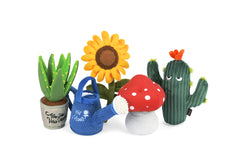Having more than one cat sounds fun, but it can actually spell all kinds of trouble. The problem? Cats don’t like to share, so a multi-cat household can easily cause lots of stress.
As a vet, I’m one of the 51% that think that cat welfare could be improved by addressing the problem of multi-cat households. So, let’s take a look at the multi-cat household problem and what you can do about it.
Why is a multi-cat household stressful?
Cats are naturally solitary creatures. Almost all species of cat prefer to live alone, meeting up only to mate. Each cat has its own territory, which is the area the cat will defend against other cats. It contains the ‘home base’ – the area where a cat sleeps and eats. This territory varies in size depending on how close together key resources are.
In a multi-cat household, these territories overlap, and ‘home base’ can even overlap. Cats who have overlapping territories can feel the need to defend them, causing arguments. More common, however, is ‘silent conflict’ – a hidden cat language of glares and smells that causes stress to all involved.
It’s estimated that 1 in 5 cats live with a cat they don’t get on with, but in reality the difficulty of recognizing the signs of silent conflict means it’s probably more.
What problems can a multi-cat household cause?
This long-term stress can cause serious problems for your cats. Whilst outright fighting resulting in cat bite abscesses are rare inside the home, silent conflict also causes medical problems.
The long-term stress can cause problems with the bladder wall, resulting in recurrent cystitis for affected cats. Problems with the hair coat and overgrooming are also common. Cortisol produced by stressed cats can cause the immune system to become compromised, causing a resurgence of cat flu and other diseases. Behavioral problems such as spraying and scratching of furniture can also result.
In other words, just because cats aren’t actively fighting, doesn’t necessarily mean they’re not being impacted by living together.
How can I help my cats get on?
Whether you’ve noticed the signs of silent conflict or you’ve got a cat with outwards signs of stress, it’s time to have a look at what we can do to make your cats’ lives more comfortable.
1. Provide enough resources
The first key is to provide enough resources—that’s food bowls, litter trays, water fountains, beds, and hideouts. A recent study in the UK found that 64% of owners don’t provide enough litter trays, and 50% of cats are forced to share water bowls.
So how many of these key resources should you be providing? The minimum is one per cat, plus one spare. So, for a two-cat household, you need three food bowls, water bowls, and litter trays. For a three-cat household, you should be providing four of everything, and for a four-cat household, you should be providing 5 of everything.
2. Spread resources around the home
We said at the beginning that your cat’s territory consists of all the resources he would fight to protect. If you put the food bowls next to one another, your cats are sharing ‘home base’ and territory, which will cause stress.
Try to spread resources around so that each cat can have what he needs without coming into contact with the other cats. A room each is perfect, but you can also spread them sufficiently without needing a four-bedroom house!
Sometimes, looking at a floor plan of your house will help you to spot ‘pinch points’ where bully cats can control several resources from one position. See if you can spread resources so this doesn’t happen.
3. Choose similar personalities
If you’re considering adding another cat to your home, think about their personalities. Don’t bring in a very lively, boisterous kitten if your current cat is quiet or elderly. If your current cat is confident, adding a cat that is shy may cause the new cat stress. In that case, the new cat first needs to become a bit more confident before he or she can be introduced into a multi-cat household.
Adopting an older cat means their personality is more fixed, and the shelter will be able to advise whether they like living with other cats or not. You may also be able to have the new cat on trial for a while to check how they settle in before making a commitment.
4. Consider pheromones
Cats use pheromones to communicate. These molecules are a little like scent, but they force a particular, repeatable, biological response.
Scientists have isolated and replicated the pheromones that mother cats produce when they’re feeding. It’s thought that these pheromones say something along the lines of ‘we’re safe, we’re all friends, this is comforting’. Using a diffuser with these pheromones can help cats in a multi-cat household to get on.
5. Call a cat behaviorist
If you’re still struggling, it might be time to call in the professionals. A cat behaviorist can help to identify pinch points, work out the family dynamics, and make recommendations to help your cats settle in together.
Ask your vet to recommend one so that you know you’re getting someone who has the correct qualifications and experience to help you out.
Conclusion
As humans, it seems crazy to imagine that cats might prefer a solitary life. If you’re thinking of getting another cat to keep your cat company, have a think about whether it’s really what’s best for your cat.
Multi-cat households can cause a lot of stress, but it can be hard to spot. It’s a good idea to make some of these changes even if you haven’t noticed any signs of stress at home. In the worst-case scenario, rehoming a stressed cat to a one-cat home is sometimes the best option for their welfare, but your veterinary team and behaviorist can help you avoid getting to that point.
About the Author:
After graduating from the University of Nottingham, Dr Joanna Woodnutt went on to practice Veterinary Medicine in the UK. But discovering a love of writing has led her to reduce her clinical hours—she now works part-time, and writes for blogs and websites like Catpointers.








